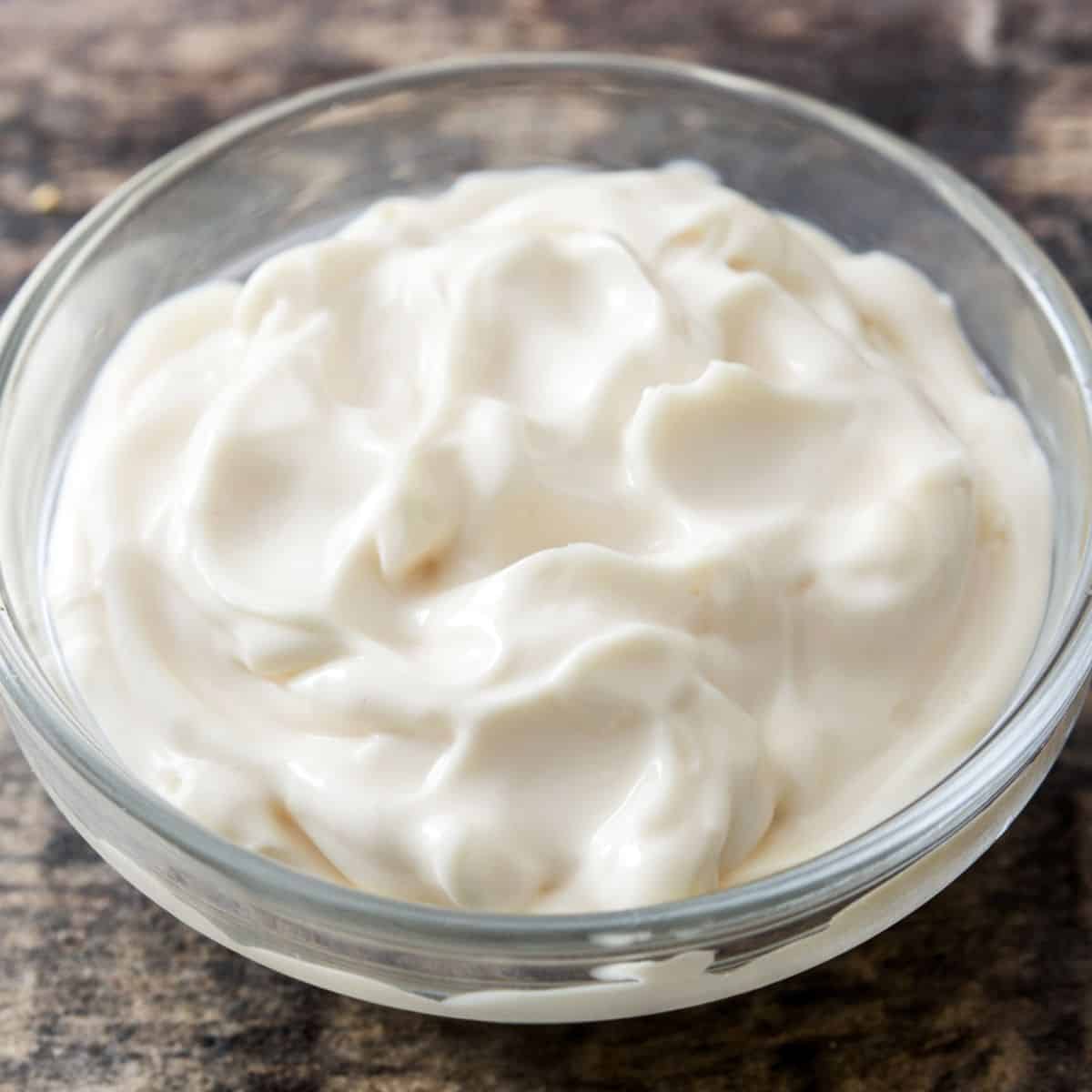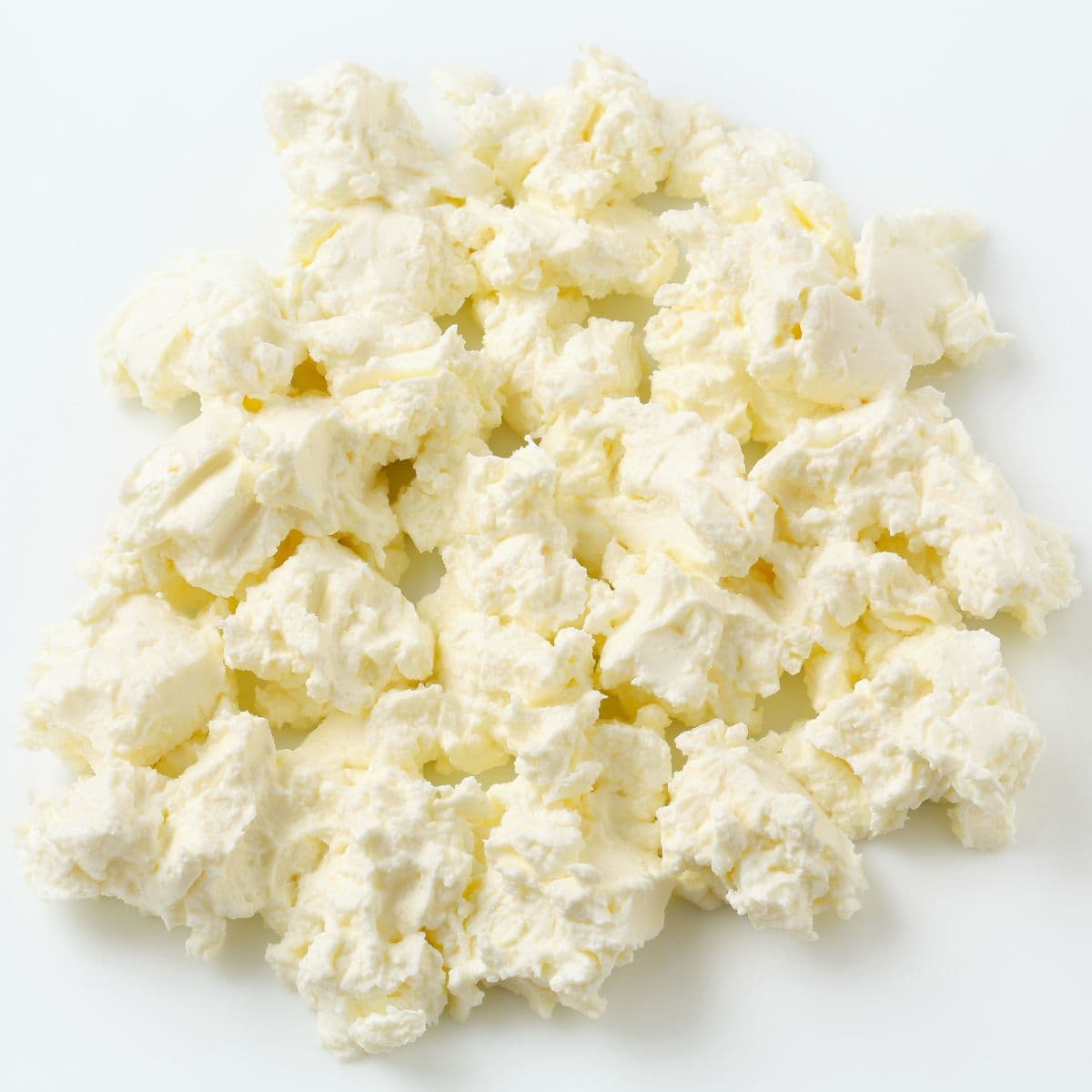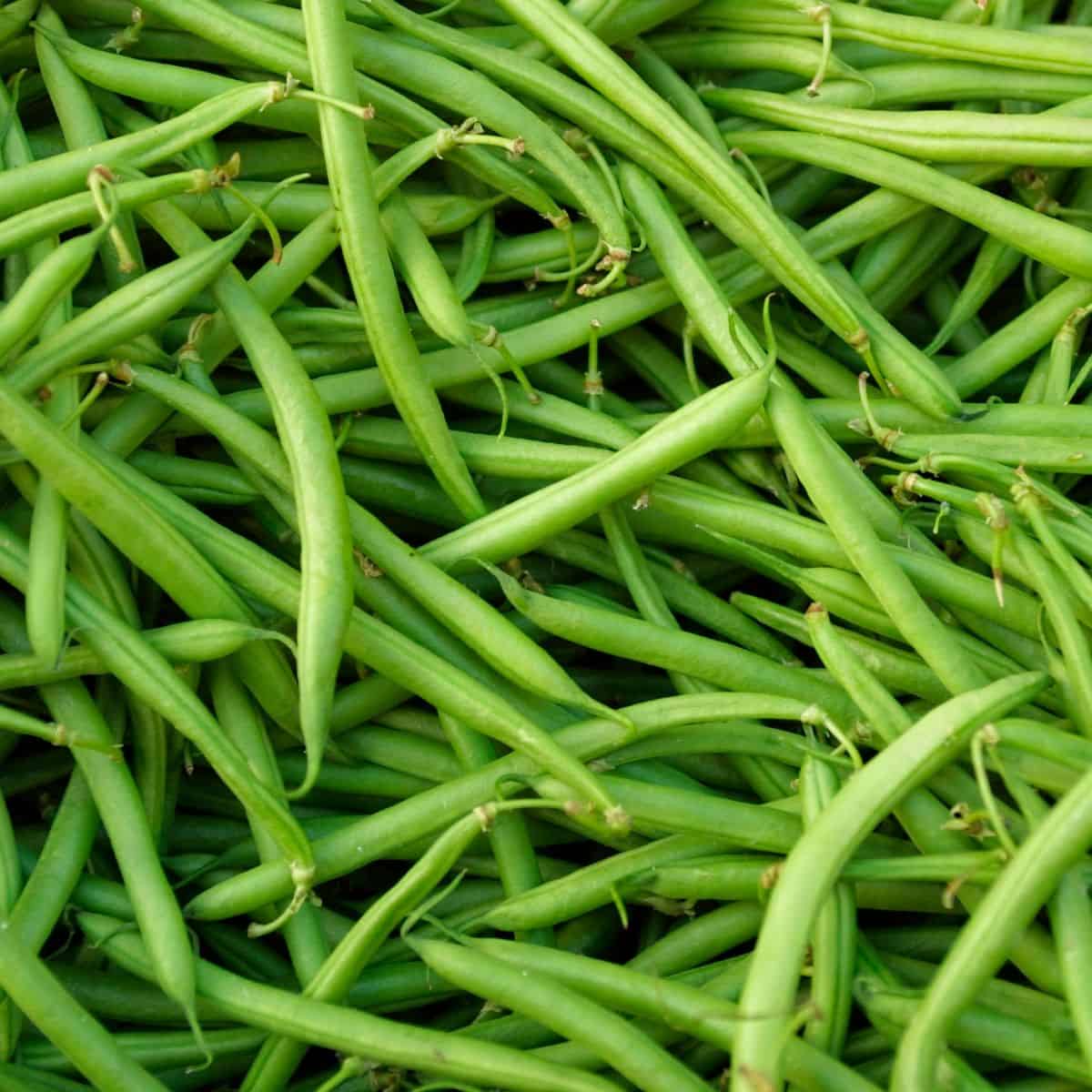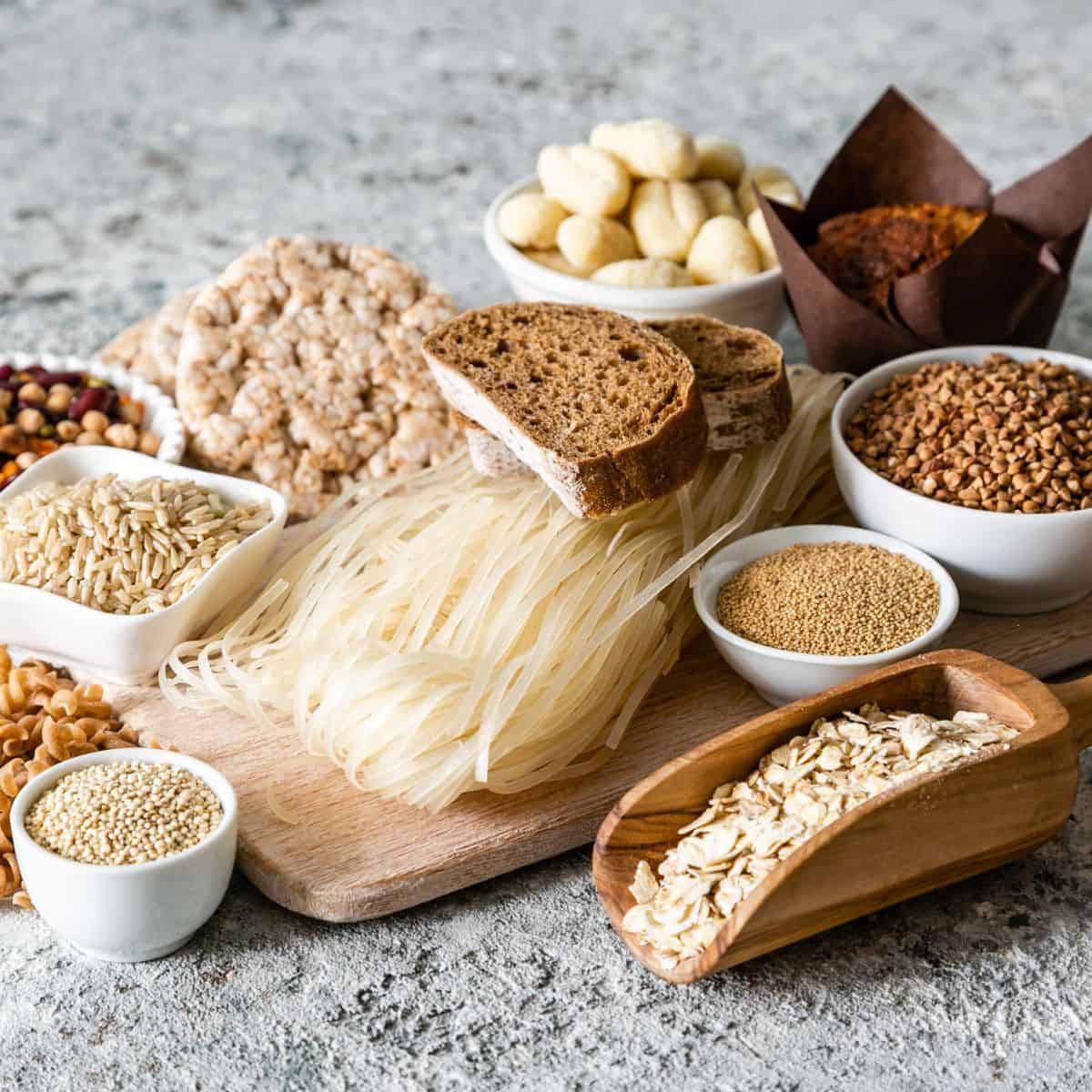Everything you need to know about macronutrients on the ketogenic diet: learn why ketosis will help you burn fat faster than ever!

We love the ketogenic diet, but it isn't magic.
Like any other diet, the keto diet requires you to eat the right kinds of foods, in the right proportion, for the best results.
There are variables in your diet that can't be ignored just because you're cutting out carbs.
For many people, this is enough to start losing weight, but it's neither optimal nor sustainable.
The keto diet requires a good balance of macros.
Regarding health, macronutrients are roughly balanced against food quality and nutrient timing, and they're even more important for physique changes.
So, read on because today, we'll provide you with all the information you need on the ketogenic diet and macronutrients.
This isn't just about getting into ketosis - but building the best possible diet.
Jump to:
Keto and Carbs: The Place to Start
Obviously, a ketogenic diet starts with carbohydrates. Or at least reducing their role in your diet.
It's not a complicated idea: you eat fewer carbohydrates and get better at using other fuel sources over time.
This means you could take this one step and forget about the rest of the variables in a diet.
It'd be ridiculous, but when has that stopped humans from doing something?
We believe in a more measured approach to carbs.
You should be getting around 30g of
them in your diet, no matter what, so you need to know a little about which ones, when, and how they work.
Carbs: Their Role
The point of carbohydrates is to provide short-term energy for various bodily processes - from brainpower to muscular strength.
This is why they're so common in the diet - especially the awful kind that is hyper-palatable and packed with sugar.
To clarify, carbs are not bad for you - at least scientifically.
The behavioral challenges surrounding carbohydrates and how they fit into your diet might be bad for you.
These are the real problems: overeating carbs is closely linked to obesity and diabetes - two of the most common and life-threatening issues today.
Types of Carbohydrates
This is crucial: there are 3 key types of carbs that you need to handle.
They are sugars, starches, and fiber.
These are in order of digestion: sugars are fast-absorbing carbs for short-term energy, while starches are slow-release and provide sustained energy over a few hours.
Fiber is even further along with this trend being indigestible from the start.
These all have separate effects on the body, and the foods you consume on a ketogenic diet should favor high-quality starches and fiber.
Sugar
Sugar is the classic villain in nutrition science - it's considered one of the biggest signs of poor health.
This isn't accurate, it can be very healthy in the right contexts, but as humans, we're awful at managing sugar intake.
This is one of the key things we focus on cutting out early on, and it provides benefits if you've got a high-sugar diet.
Associations with diabetes and obesity are a problem, but the keto diet almost entirely removes sugars.
Starch
This is the main category: common carbs fall into bread, pasta, and rice.
Obviously, this is a range of different compounds, and they have different effects.
There's no one starch but a selection.
They range from being slightly more complex than sugars to huge chains of carbs that provide slow energy and may even be closer to fiber.
This is where most of the carbs should come from in a normal diet - and should represent the main source of NET (or digestible) carbs on a ketogenic diet.
They're slow absorbing, assist with fueling your existence, and often come bound up with fiber in vegetables like carrots.
You might not be able to avoid starches, but that's fine because they're a natural, sustained energy source in your fruit and veggies.
Fiber
This is the most important carbohydrate for keto.
Fiber is non-digestible, so you can consume almost any amount and not drop out of ketosis.
The fact that you can't digest fiber is also the source of its metabolic and digestive benefits.
First, it's a way of regulating the speed at which your body absorbs other foods.
This is great when combined with dietary fats, which might otherwise cause some digestive slow-down.
Second, this slow absorption means that everything you eat with fiber will be released into the bloodstream more slowly.
This is less important for keto - where fast-absorbing sugars are almost 0 - but the key for any diet.
Fiber plays into many health benefits, and it's why you can't just rule out carbs.
This form of metabolism-regulating carb is why you need tons of veggies (as well as the crucial vitamins and minerals).
Cutting Carbs
This is a necessity for the ketogenic diet, but it also comes with a few challenges - such as 'keto flu' and fatigue.
So, we have a method for carb-limitations.
To start with, you need an idea of your current carb and goal intake.
A goal intake on the ketogenic diet is usually around 5-10% of calories, usually around 30g a day.
To get the most from your diet, you must figure out the difference and reduce 10% every 3-4 days.
This will produce a gradual adaptation to fats as a primary fuel source.
This means less short-term fatigue, keto flu, and a better chance of sticking with it.
Where to start?
Think about it: if you've spent 20+ years consuming carbohydrates, you're not going to be able to cut them out effectively overnight.
It can take 3 months to get into keto-adaptation, so you should focus on the long term.
Your first carb-cutting changes should focus on the most problematic types: refined sugars in low-fiber foods.
You'd expect these sugary junk - candy bars, sweets, full-sugar sodas.
These foods are high in calories and fast-absorbing sugars without any real nutrients and have low-satiety.
You can easily smash 1000s of calories of sugar from soda, so it needs to be balanced in your diet.
Cutting out these carbs alone is a good way to improve your diet and bring back some balance.
You should go through this, removing the worst of your diet and replacing it with superior foods where possible.
This approach Is gradual: it doesn't ask you to make unsustainable changes, and it doesn't mean feeling bad during the early days of a diet.
It's simple: to succeed, you must make this transition as easy and enjoyable as possible!
What should your remaining carb intake look like?
The goal you have for your carb intake shouldn't just be about the number of carbohydrates in your ketogenic diet.
Rather, it should be about the whole structure:
- Which carbs are you eating?
- How many carbs are you eating?
- When are you eating them?
- What are your carb combinations during your meals?
These are just some of the questions.
We're going to try and get this in one simple take:
You should eat high-quality, high-fiber, nutrient-dense carbohydrates whose absorption speed is inversely proportionate to your time to work out.
What does this mean, in simple terms?
Most of your carbs should result from high-quality vegetables like broccoli and leafy greens, with a small representation of moderate-carb veggies and other options.
The end goal is to get your carbs from the best carbs - meaning the best diet possible.
Spend your time finding staple vegetables and other complex carbs that will fit the remainder of your diet with as many nutrients as possible.
The Ketogenic Diet and Fats
As a high-fat, low-carbohydrate diet, there is no way around discussing dietary fats when considering a ketogenic diet.
This will be the vast majority of what you're eating, so it will be the biggest determining factor in the overall effects of your diet.
This makes for an interesting problem - since most people are at least a little skeptical about dietary fats.
Again, fats are not bad for you and don't make you fat.
Over-eating is a problem; you need to be concerned with your intake since they're very calorie-dense.
Fats provide 9 calories per gram, which means a few hundred grams too much can easily add up.
Fortunately, fats tend to be filling, and a good ketogenic diet balances them with fibrous vegetables and high-quality proteins.
Fats as Fuel
Carbs are short-term fuel. Fats are backup fuel.
This is the basic pattern we see - and it's why the ketogenic diet works.
Energy from stored fat is plentiful - usually in the 10,000s of calories per person.
This is an enormous amount of energy to rely on, and it shows through in your exercise performance.
Getting your body to use fats as fuel does require you to force it a little.
Carbohydrates are the obligate source, so a diet that limits carbs and provides a balance of high-quality fats will be the best way to establish long-term efficiency with fats.
This is where most of the benefits of the ketogenic diet come from: reductions in poor carb-eating habits and the benefits of a fat-efficient metabolism.
This is the root of improved endurance performance and the ability to shift more body fat during long-duration exercise.
The fats you use - as well as what you combine them with - play a crucial role in the way that it all works.
Types of Dietary Fats
Over the past century, everything has been 'bad for you' at some point.
Saturated fats were the devil in nutrition during the late 20th century: everyone thought saturated fats directly caused heart issues.
Science has shown this - and every other one-factor cause - to be false.
Their reputation persists, however: you'll hear plenty of people saying that a high-fat diet causes heart problems.
Obviously, this is far from correct, but it's stuck around, and we'll have to address it.
Saturated Fats
These are the bad boy of dietary fats: they've got a bad reputation, but they're not all that bad for you.
Saturated fats are essential for various hormonal processes - from supporting testosterone production to supporting body-fat metabolism.
They're not just one thing but a family of different fats with different structures and a single shared characteristic.
For now, all you need to know is that saturated fats are not bad for you unless you eat them in excess.
This is where the problems come from.
On the contrary, dietary sat-fat intake is important, and MCTs are a great example of high-quality saturated fats.
They have mild benefits to fat loss and are perfect for the ketogenic diet and how it supports fat loss and exercise performance.
However, saturated fats should make up no more than ⅓ of your diet since they provide a limited benefit after a certain point.
Excess is anything above this, so try and limit them within your diet beyond a certain point.
MUFAs: Mono-Unsaturated Fatty Acids
These are the middle of the road - they're not associated with as many problems as saturated fats. Still, they also don't have the reputation for excellent health benefits we see with PUFAs.
These fats should also be roughly ⅓ of your dietary fat intake and provide a well-balanced array of benefits.
They will be mildly superior to your standard saturated fat but won't actively adjust heart health.
The main role they should play in your diet is to replace the lower-quality saturated fats since they provide fuel without as many risks.
Obviously, excessive consumption is still a concern since you will be over-eating.
"Good Fats": Poly Unsaturated Fatty Acids
These are the characteristic "healthy fats" you've heard about.
This means a variety of benefits you will need to maximize to get the most from your diet.
PUFAs, as they're called, have a great reputation for excellence and provide a wide range of heart-and-brain-health benefits.
These are why we put them at the top of our priority list regarding dietary fat.
You're going to want to maximize these - while saturates should be no more than ⅓ and MUFAs should be roughly ⅓, PUFAs should be at least ⅓ of your dietary fats.
This category also includes Omega-3 fatty acids, the market's most important and beneficial type.
These are associated with more powerful versions of the nervous system benefits mentioned above, as well as supporting exercise performance and recovery.
Finding Balance with Fats
The 1:1:1 model (sat:MUFA:PUFA) is a simple way of getting the most from a ketogenic diet.
While it's not a perfect system, it's a great jumping-off point for optimizing your keto diet.
This is one of the ways that macros play more of a role than you may expect - the type of carbs and fats you take in will adjust your outcomes.
Getting the most from a ketogenic diet means prioritizing, not restricting, or tracking obsessively.
Macro-nutrients squeeze the absolute maximum from your diet and provide organizing principles for the best ketogenic diet.
Key Fats to Focus On
We will cover the most important types of fat quickly and why they're so crucial to your keto diet's success.
Omega-3 fats are the best dietary support for joint inflammation and supporting cellular health.
They keep membranes pliable, reducing the risk of inflammation and cell death.
This also improves nutrient travel and supports recovery after exercise.
Fish oil supplements are cheap and effective and support the absorption of other key vitamins/minerals, so take your fish oil.
MCTs were discussed above, but they deserve their specific discussion.
These compounds are found in high concentrations in coconut oil and are the best-saturated fats to put into your diet.
They support the fat-oxidation process necessary for better overall fat-burning, especially for using fats as workout fuel.
These should be your go-to saturated fat choice - and they're the reason why coconut oil is so popular in LCHF diets.
Protein: The Famous Macro-nutrient
If you've heard anyone discuss nutrition, there will be a time when the discussion of protein is a big topic.
For most people interested in exercise and muscle-building, it's always in the spotlight.
This is why protein-rich diets improve muscle building and recovery between workouts and even assist with fat loss.
There are a few specific things that the ketogenic diet has to deal with around protein that most diets won't.
Keto and The Challenge of Protein
The challenge keto runs into is "how much protein should you eat?".
This might sound like a familiar problem, but with keto, it's different.
Most diets say "more" because protein brings benefits, and more protein brings more benefits.
Keto has to deal with the fact that too much protein will knock you out of ketosis.
For this reason, a ketogenic diet has to restrict your overall dietary protein intake to a certain level if you're trying to lose weight.
This is a concern since the best benefits are less common at this lower intake.
You will see reduced muscle gains and a slower process toward strength and size.
This is also a concern for endurance workouts, where the amount of protein damage after training will be high.
These are a bit of a problem since improved performance leans heavily on being at your best as often as possible.
What is "Adequate" Protein?
The guidelines for protein intake on a ketogenic diet limit you to around 25-30% of dietary calories from protein.
This will be around 150 grams as an upper limit for most people.
This is a low-protein diet when we hold it up against a variety of other LCHF diets - things like the mountain dog diet focus on fats and proteins.
This makes for a well-balanced diet regarding macros, but ketosis is a limiting protein intake factor.
If you're looking for performance at the highest levels, you will have to consider the protein demands of your sport.
Obviously, this is a better choice than your average person's diet, so moving to a ketogenic diet from a "normal" one will be positive.
However, this will be a stark change if you're used to pro-muscle mass diets.
Protein and Fat Loss
One of the most important benefits of dietary protein is the ability to support fat loss.
This is one of the reasons it is effective for any diet that isn't ketogenic: it boosts muscle mass, exercise recovery, and the ability to reduce fat.
Higher protein intakes work in two ways:
- Protein intake is an easy way to reach satiety and a signal for "fullness" - it is crucial to managing weight and improving overall adherence to your diet.
- Protein intake is a great way to regulate metabolic health and digestion and improve nutrient partitioning. These are crucial to long-term health and well-being.
This would make an increased protein intake a great aspect of the ketogenic diet if it weren't for your body's ability to burn the dietary protein for energy.
This shortcuts the ketosis process and can slow down your keto-adaptation.
You might be okay with this - your fat efficiency is still likely to increase - but if you rush into ketosis as quickly as possible, protein limits aren't negotiable.
You're going to struggle to achieve ketosis without considering protein.
Inescapable Proteins
This is one of the areas where you have to consider your meals as a balance of the different macro-nutrients with an eye to what you're mixing.
Many animal-based proteins come with a balance of fats and proteins - simply due to how animal meats work.
This is also true of other protein sources such as eggs.
Proteins and fats are intimately tied together simply because of how their sources are structured.
A restricted protein diet can be a real concern if you want to eat large quantities of high-quality fats and proteins.
Things like salmon will be great, but tuna and other fatty fish will come with a hard limit to ensure that you're not over-eating protein and using them in energy production.
The adequate protein approach is another reason this diet is pro-weight-loss but struggles to build muscle.
There are other factors, but overall the lack of protein will be a limiting factor in recovery and high-quality weight gain.
Getting Past Macros: What's on the Pyramid
At the start of this article, the dietary pyramid is one of the most important and easy-to-use models for health and well-being.
The way that macro-nutrients play into this pyramid differs from other stages.
How you relate your macros to other aspects of your diet is key to getting the most out of it once you've implemented the lessons above.
Getting your macros in will be a key way of discussing your health and well-being: you need to ask yourself where they're coming from.
Notice how macro-nutrients are smaller than food sources - but the two are intimately connected.
The Salmon Example: Putting it All Together
Salmon is a great example we've already used, perhaps only because it is an ideal example of the ketogenic diet.
Increasing your protein and fat intake associated with salmon is not the same as with hot dogs - another food with a similar relationship between proteins and fats.
Finding the right sources of each macro-nutrient depends on getting a mixture of each macro-nutrient with crucial health-boosting nutrients.
Micro-nutrients - mostly vitamins and minerals - are a way to select the right sources for fats, carbs, and proteins.
We will look at two things concerning keto and Macros: nutrient density and food volume.
Nutrient Density and Macros
This is about the nutrients in your food that are not macro-nutrients.
Vitamins and minerals make up most of the micro-nutrients that matter for your diet.
They're not the only crucial compounds, but they're the ones you're probably familiar with - and they're the ones you need to focus on.
The amount of vitamins and minerals for the number of calories/macro-nutrients you're getting is key.
More nutrients mean more nutrient density, with higher micro-nutrient concentrations per calorie being the key factor in "healthy" and "clean" foods.
You'll see high nutrient density in the foods you might already consider healthy: salmon, veggies, salads, eggs, and so on.
These will be a big player in an effective ketogenic diet because they balance the macro-nutrients you want - fats and protein - with the vitamins and minerals your body needs.
Food Volume and Satiety
If you're trying to lose weight, being full more often will be an easy way to improve your experience and make it sustainable.
This is where we look at food volume and how dieting works.
This is about the sheer size and volume of food, especially compared to the calories and macro-nutrients they provide.
A high-volume food is going to be low in calories and high in physical bulk.
Examples include celery, lettuce, broccoli, and leafy greens.
These also tend to be high in nutrients, but some examples are primarily "fillers," like lettuce which are more important for filling than being nutritious.
If you're struggling with the ketogenic diet and feel that energy-dense fats aren't filling you up, food volume is an easy way to improve your habits.
Try eating salmon or venison followed by edamame, lettuce, and shredded carrot salad - it's a challenge, but the calories are low.
This balance between actual macronutrients and the things that determine food nutrient density and satiety is an easy hack for making a keto diet stick.
Final Thoughts
The way that the ketogenic diet works do not circumvent the way that dietary macros work.
A ketogenic diet isn't about ignoring macros and feeling great about it.
It's a way of making the right macros work for you and ensuring that you're as efficient as possible with all of them - rather than carbohydrate-dependence.
This means that you need to pay attention to how you can improve your diet.
A newcomer to keto will make some great behavioral progress and become more fat-efficient, but this isn't the whole diet.
Macro-nutrients are a cool way of adjusting your diet as you progress to make sure you keep getting better.
Keto is a great start, but without accounting for the macro-nutrients "under the hood," you're likely to plateau and waste your time and effort without the progress to show.
A keto diet is not magic - it's just a diet - but how you approach it can elevate your health to a huge boost.
It's a continually improving project, and the information we've discussed today is essential to making the most of your ketogenic diet.
Put time into your diet, make sure it's sustainable, and continue to improve with time.
You can apply all these lessons to improve - and you'll see short-term and long-term results.
Tell us what you think and what macro-nutrient changes have been key for you!
If you're ready to start your keto diet, check out our simple keto meal plans with guides, tips, and delicious low carb recipes.





That was a very valuable tip. Thank you for this article.
Glad to help!